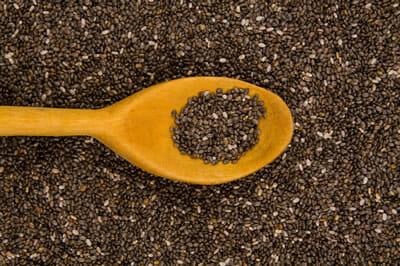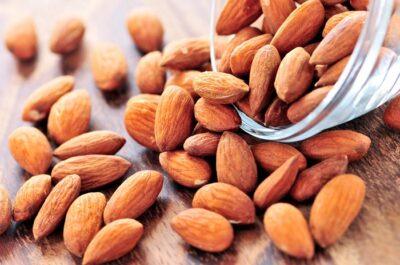The blog post 8 Protein-Packed Plants That Deserve A Spot In Your Diet was originally published to http://totalsurvival.net
Protein-packed plants deserve to be a part of your diet — even if you are a meat-eater! (Image source: simplebites.net)
When we think of protein, it is mainly animal sources that come to our mind. In fact, 70 percent of the protein consumed in most developed countries comes from meat and poultry. But there are plenty of protein-packed plants that can offer this macronutrient as part of a balanced diet.
Animal proteins, including fish and eggs, milk and meat are concentrated protein sources. Notwithstanding, they come loaded with many extras — mostly a result of factory farming — that we don’t really need. Dietary cholesterol and fats are no longer thought to have as much of a direct relation to our blood cholesterol and lipid profile as previously believed. However, animal protein sources remain high in calories and often undergo some amount of processing to reduce their fat content. Including plant proteins in our diet would not only add variety and many beneficial phytochemicals but reduce processed food load as well.
Plant proteins are often considered inferior on account of being incomplete proteins. They may lack one or more of the essential amino acids that form the building blocks of proteins. These essential amino acids should come from our diet, as they cannot be synthesized by the body. But it doesn’t matter if all of them come from the same food item or from different foods. Variety is the key here; even vegans can get their fill of essential nutrients by combining pulses, oilseeds, and cereals in their diet.
Here is a selection of the best plant protein sources that deserve to be a part of your diet — even if you are a meat-eater!
Protein-Packed Plants (#1): Hemp Seeds
The cannabis plant from which hemp seeds and hemp fiber are obtained is closely related to the plant that provides the narcotic drug hashish. But hemp seeds do not cause any drug-induced “high,” and you can safely use them as a high-quality raw food. It is one of the few plant sources of complete protein. Moreover, all of the essential amino acids come in the right ratio for maximum benefit. On top of that, hemp seeds come loaded with fiber and minerals such as iron, potassium, and magnesium. It is an excellent source of vitamin E, too.
You can eat hemp seeds raw or sprinkle them on breakfast cereals and salads to enjoy their best benefits. In addition, you can bake them into breads and cakes. When soaked in water and ground, they yield hemp milk, a great alternative to dairy.
Protein-Packed Plants (#2): Chia Seeds
 This famous Aztec food is hailed as a health food for many reasons. Produced by a plant of the mint family, Chia seeds are a nutritional storehouse of vitamins and minerals. Although they are mainly valued as a plant source of omega-3 fatty acids, they contain a good amount of protein, too.
This famous Aztec food is hailed as a health food for many reasons. Produced by a plant of the mint family, Chia seeds are a nutritional storehouse of vitamins and minerals. Although they are mainly valued as a plant source of omega-3 fatty acids, they contain a good amount of protein, too.
The tiny seeds swell up when you add water and they then become a gelatinous mass. This concoction gives a pleasurable sensation to beverages and puddings.
Protein-Packed Plants (#3): Peanuts And Other Oilseeds
Oilseeds are mainly grown for the production of culinary oils, but they are rich in sources of plant proteins. Soybean, sunflower, sesame seed, flax seed, peanuts, and coconut are just some of the commercial oilseeds of which soybean is already quite famous for its high protein content of 40 percent. At 10 to 15 percent, coconuts have the lowest protein content among these, with the other oilseeds falling in between.
Over-processed soy proteins have earned them a bad name of late, but most of the other oilseeds can be consumed with minimal processing to derive their nutritional value. A light roasting would bring out their nutty flavor and turn them into healthy snacks or a garnish over other dishes. Peanut butter has been a staple for long; flax seeds have enjoyed a health food status; sunflower and sesame seeds can be eaten plain roasted or ground into hummus or other condiments. Use them liberally in your trail mixes and baking.
Protein-Packed Plants (#4): Beans
Beans, the dried ones that remain good for years, can be called nature’s little packets of nutrition. They come in a variety of sizes and shapes besides the kidney-shape with which we are most familiar. Be it Borlotti with its earthy flavor, Fava and Garbanzo beans that are slightly nutty, the buttery Lima beans, the delicate Cannellini/white navy beans, or the tiny black beans with a sweet tinge, all of these legumes provide proteins and some carbohydrates with plenty of soluble fiber that make them low glycemic foods.
Notorious for causing flatulence, beans are sometimes shunned, but soaking them overnight and changing the water once or twice should reduce this problem. Cooking the beans thoroughly helps too.
Survive On Just A Tablespoon Of This A Day?
Protein-Packed Plants (#5): Lentils
Lentils are the little cousins of beans, as they both belong to the legume family. But lentils do not have the typical kidney shape; they are disc-shaped. Their protein content per weight is very high, coming a close third to soybeans and hemp. Lentils come with or without the skin. The yellow and red skinless split lentils cook faster to make a smooth paste that helps thicken soups and gravies, but the ones with skin add more texture and some extra nutrients and insoluble fiber.
Unlike beans, lentils need not be soaked overnight. After washing and keeping aside 10 to 15 minutes for softening, the split ones without skin can be cooked directly into a soup with plenty of water and seasonings. The French lentils with skin can be cooked on low heat in an open pan to retain their firmness.
Protein-Packed Plants (#6): Almonds And Other Tree Nuts

Image source: grapplergourmet.com
Raw or roasted, tree nuts are a tasty source of vegetable protein for people who have no allergy or aversion to them. All types of nuts are rich sources of protein, including peanuts, which are not really nuts in a true botanical sense. But their protein content varies, with almonds and pistachios occupying the top of the list followed by walnuts, hazelnuts, Brazil nuts, and cashew nuts. Pecans and macadamias have only half the protein content of walnuts and cashews.
Almonds and the other nuts can make a healthy, anytime snack on their own, or you can turn them into delicious nut butters. They are particularly good for the heart and the circulatory system because of the healthy fatty acids in them.
Protein-Packed Plants (#7): Quinoa
Quinoa is now a favorite with many people, as it is considered a gluten-free grain, but the truth is that it is not a grain at all, despite its resemblance to millet. It is the seed of Chenopodium quinoa, an Amaranth family plant related to spinach and Swiss chard. That’s why it’s a high-protein food that’s free of the protein gluten found in wheat and a few other grains.
You don’t have to be on a gluten-free diet to enjoy the many benefits of quinoa. Cook it in water like rice and add it to salads. Use it to stuff mushrooms, tomatoes, and bell peppers or cook it into pilaf with vegetables and spices for a protein-rich meal.
Protein-Packed Plants (#8): Spirulina
The blue-green algae Spirulina is the last on the list, but the highest in protein content. Seventy percent of its dry weight is protein, compared to 22 percent in beef, although you can imagine how much seaweed would have gone into the making of a spoonful of Spirulina powder. Add a tablespoon or two to your smoothies or regular dishes to increase your daily protein intake.
Protein is not the only reason for Spirulina to be hailed as a health food; its high nutritional content includes several minerals and vitamins, including more beta-carotene than carrots. It offers protection from chemical contamination by heavy metals such as arsenic, and also has positive effects on cardiovascular health and immune function.
Learn how to add these tasty protein-packed plants to your diet today and you will find that your food tastes better and your body looks and feels its best!
What “protein-packed plants” would you add to the list? Share your thoughts in the comments section below:
Click Here To Learn More About The Oldest Superfood On Earth
The post 8 Protein-Packed Plants That Deserve A Spot In Your Diet appeared first on Off The Grid News.
This Article Was Originally Posted On offthegridnews.com Read the Original Article herePost Source Here: 8 Protein-Packed Plants That Deserve A Spot In Your Diet
No comments:
Post a Comment